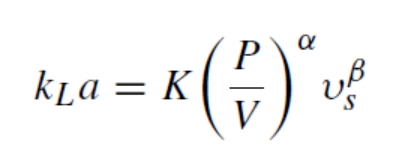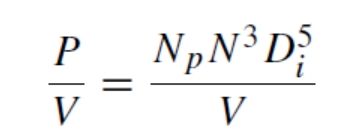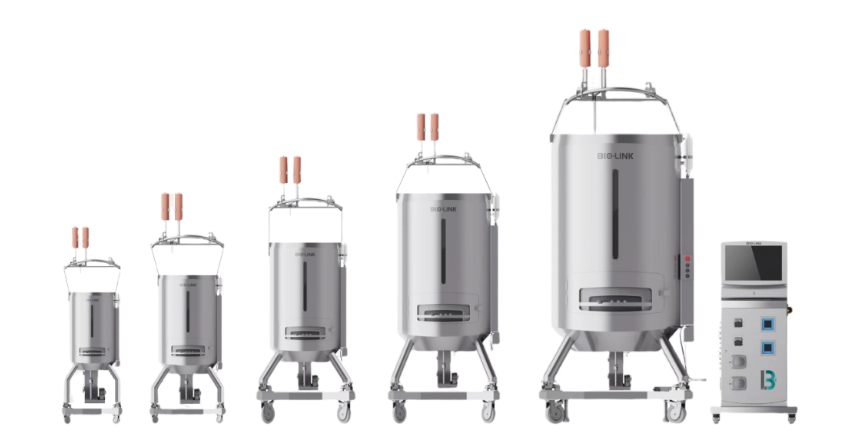November 26, 2024
Tag:
Mixing not only ensures a uniform condition but also plays a crucial role in enhancing mass transfer, which is essential for supplying oxygen to cells and stripping carbon dioxide.
The mixing in large-scale mammalian cell culture is typically driven by axial pump impellers, such as pitched blade or hydrofoil impellers. Compared to radial flow impellers (e.g., Rushton impellers), axial flow impellers require lower mixing speeds to achieve the same mixing efficiency, thereby exerting lower shear stress on the cells.
In large-scale bioreactors, baffles are typically used around the vessel to induce turbulence. Without baffles, the circulating energy provided by the impeller cannot fully promote the turbulent motion required for proper mixing. The absence of baffles can also lead to the formation of a central vortex, which may result in uncontrolled transfer of gas between the headspace and the culture medium. Another strategy to increase flow turbulence is to install the impeller eccentrically. This is mainly used when baffles are not convenient, such as in the case of bioreactors for single purpose. However, it is well known that achieving the same number of mixing cycles with an eccentrically installed impeller requires approximately twice the power input compared to a concentrically installed impeller.
Mixing is related to aeration through volumetric power input (P/V), as shown in Equation(1). Volumetric power input is an important engineering parameter often used as a criterion during scale-up to ensure comparable culture homogeneity. Volumetric power input can be measured or calculated using Equation(2), where Np is the dimensionless power number, N is the mixing speed, Di is the impeller diameter, and V is the volume. Depending on the type of impeller used, various correlations can be employed to evaluate the power number of the agitated container, typically as a function of flow conditions (Reynolds number) and aspect ratio. When the flow is turbulent, the power number becomes independent of the Reynolds number in baffled vessels.

Equation(1)

Equation(2)
For CHO cell cultures in bioreactors, the mixing speed is typically adjusted to achieve a P/V range of 10-80 W/m3. Another critical factor that must be considered when setting mixing conditions is the impeller tip speed. Since high impeller tip speeds (νt) generate high shear stress zones, it is advantageous to minimize νt.
At increased air or oxygen sparging flow rates, lower mixing speeds are required to maintain a constant gas mass transfer coefficient (kLa). This, in turn, increases the mixing time and may lead to heterogeneity in the culture medium, including significant dissolved oxygen gradients due to varying local gas mass transfer coefficients. In larger vessels, the fact that mixing times are significantly longer can further exacerbate this situation.
For instance, the mixing time increases from 10 seconds in a 3 L benchtop bioreactor to 120 seconds in an industrial-scale bioreactor. With the increase in mixing time, concentration gradients of pH, dissolved oxygen, carbon dioxide, and nutrients gradually increase. These gradients can have significant impacts as cells may traverse through a region of suboptimal operating conditions (so-called microenvironments), leading to reduced overall culture performance. In particular, glycosylation patterns have been found to be influenced by different dissolved oxygen levels. pH heterogeneity also negatively affects viable cell density and product titer. In bioreactors, due to the presence of well-mixed regions and increased hydrostatic pressure, there is a higher gas mass transfer coefficient near the bottom close to the impeller. To improve mixing, it is generally recommended to minimize the culture volume and add base near the impeller to reduce pH peaks.
The structure and shape design of a bioreactor are closely related to its functionality. A well-designed reactor shape and structure facilitate efficient gas transfer, optimal mixing, and pressure control during operation, enabling better controllability of cultivation conditions and simpler adjustment of process parameters through gas regulation in microbial/cell culture processes. BioLink manufactures bioreactors with excellent structures and comprehensive functions. The product is available in 50L, 200L, 500L, 1000L, and 2000L, catering to various culture process needs of different scales and suitable for industrial-scale mammalian, insect cell, and other low-shear-force demanding cell cultures.
BioLink CytoLinX® BR Single-use Bioreactors

Features:
• The tank shape and structure are well-designed with complete functions. A single control cabinet can control multiple tanks through plug-in connections, significantly reducing costs (different sizes of tanks can be provided according to process requirements, supporting process scale-up).
• Reliable PCS 7 system that meets ISA 88 standard, applicable for whole-plant control.
• The software is designed with user-friendly interface in compliance with 21 CFR Part 11.
• Flexible configurations, partly customizable upon customer requirements.
• The main parts are all high-end brands and passed the inspection before leaving the factory to ensure high quality.
• The sparge is available in micro, medium, and macro sizes to meet various processing needs.
Reference:
Lucas Lemire, Phuong Lan Pham, Yves Durocher, and Olivier Henry 《Practical Considerations for the Scale-Up of Chinese Hamster Ovary (CHO) Cell Cultures》


Contact Us
Tel: (+86) 400 610 1188
WhatsApp/Telegram/Wechat: +86 13621645194
Follow Us:




 Pharma Sources Insight January 2025
Pharma Sources Insight January 2025


